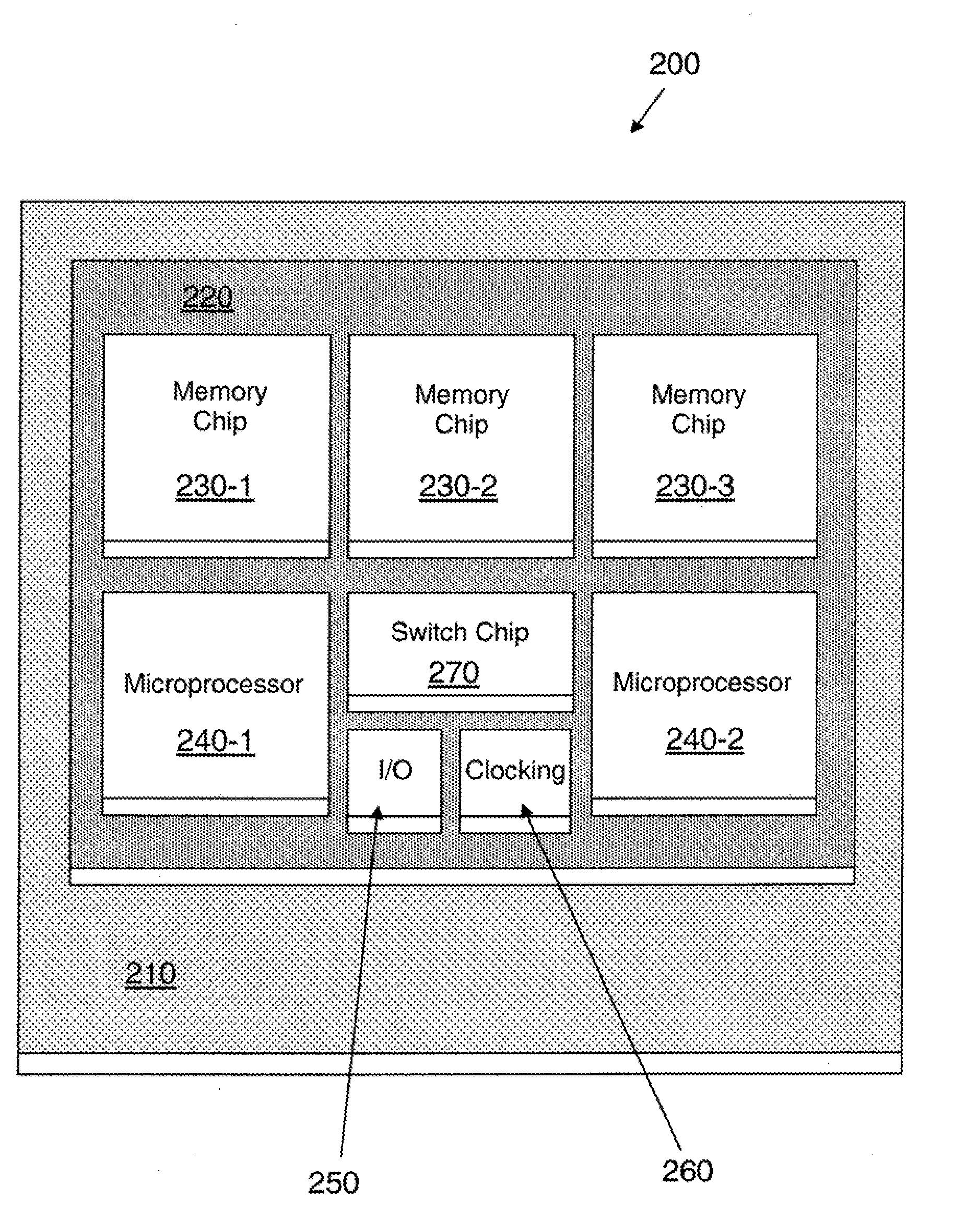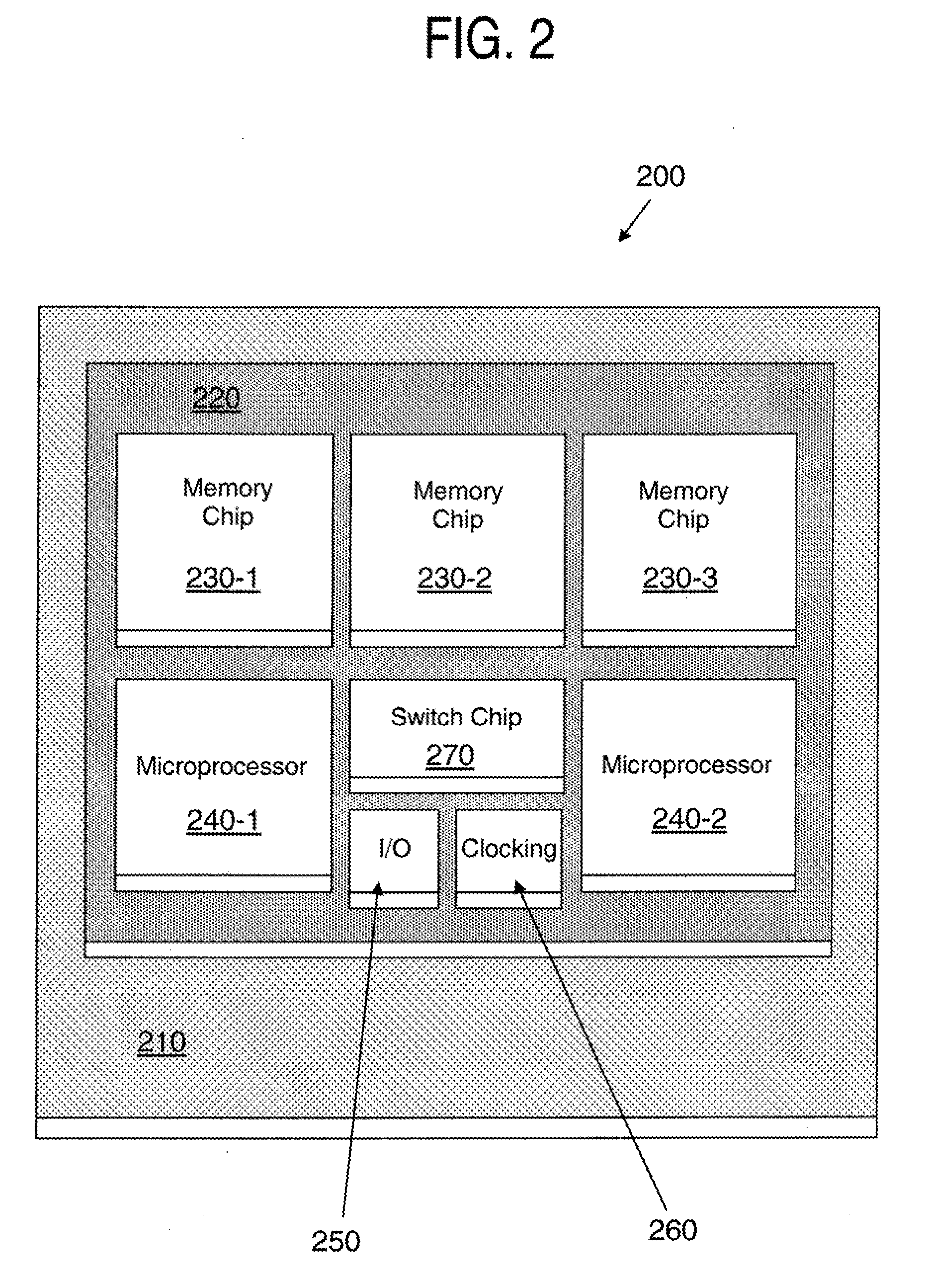Silicon Carrier Structure and Method of Forming Same
a silicon carrier and silicon technology, applied in the field of electronic systems, can solve the problems of large die size, drive semiconductor die cost up, and inability to process multiple complex mixed logic and memory devices on one wafer, and achieve low cost, high yield, and robust results.
- Summary
- Abstract
- Description
- Claims
- Application Information
AI Technical Summary
Benefits of technology
Problems solved by technology
Method used
Image
Examples
Embodiment Construction
[0021]Hereinafter, exemplary embodiments of the present invention will be described with reference to the accompanying drawings.
[0022]Various exemplary embodiments of the present invention include a surface mountable integrated circuit fabricated in a silicon carrier or wafer with interconnection to silicon chips or connection with a printed circuit board as well as a structure and method for high-performance electronic packaging assembly using a silicon interposer to connect microprocessor and memory chips.
[0023]A silicon carrier structure, according to an exemplary embodiment of the present invention, includes flip-chips attached without the use of engineering pad changes between the semiconductor devices, creating a shorter path for interconnection and permitting testing and changes on the opposite side of the substrate, and permitting reduced length connections. Further, top surface repair may be substantially avoided.
[0024]Various exemplary embodiments of the present invention ...
PUM
| Property | Measurement | Unit |
|---|---|---|
| diameter | aaaaa | aaaaa |
| diameter | aaaaa | aaaaa |
| height | aaaaa | aaaaa |
Abstract
Description
Claims
Application Information
 Login to View More
Login to View More - R&D
- Intellectual Property
- Life Sciences
- Materials
- Tech Scout
- Unparalleled Data Quality
- Higher Quality Content
- 60% Fewer Hallucinations
Browse by: Latest US Patents, China's latest patents, Technical Efficacy Thesaurus, Application Domain, Technology Topic, Popular Technical Reports.
© 2025 PatSnap. All rights reserved.Legal|Privacy policy|Modern Slavery Act Transparency Statement|Sitemap|About US| Contact US: help@patsnap.com



